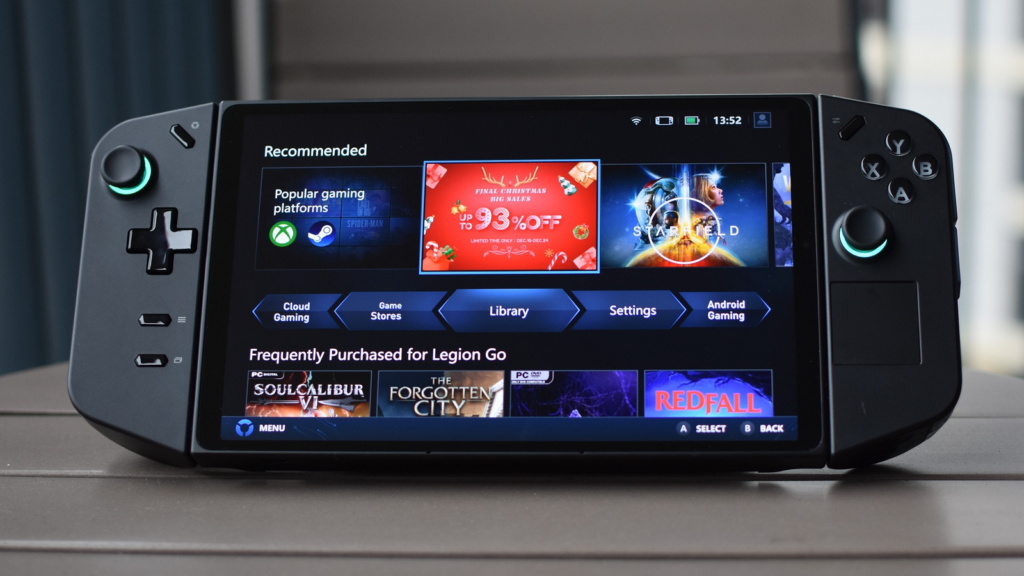When Valve released the Steam Deck, PC manufacturers realized there could be a new market for small, handheld computers that are capable of running games. Lenovo released the Legion Go and Asus released the ROG Ally.
Windows Central managed to get hold of the first official renders of Lenovo’s upcoming gaming handheld, the Legion Go S. And it looks like Asus may have found the right form-factor as Lenovo’s new device looks similar to the Asus ROG Ally (and its successor the ROG Ally X — which TechCrunch reviewed earlier).
Lenovo appears to be going back to basics with the new handheld as the detachable sticks, kickstand, and trackpad are gone. But there looks to be a nub on the right-hand side to control the mouse.
According to Windows Central, the Legion Go S is supposed to be a budget device, so it should be less powerful than the full-fledged Legion Go (or Asus’ ROG Ally X). We’ll likely learn more about Lenovo’s incoming hardware at CES in January 2025.
With the Legion Go, the battery always feels like it’s visibly ticking down… and like other Windows handhelds, it ticks even faster when close to empty. You can take a Steam Deck to 3 percent battery before you need to seriously consider saving a game or plugging into the wall. With the Legion Go, even reaching 10 percent puts me in the danger zone.

I’m happy to say the Legion Go doesn’t lose a lot of battery while it’s completely shut down, but even that’s a bit of a backhanded compliment — because shutting down is the only way I’ve been able to reliably put it away. Many times, I’ll find it wakes itself up right after I put it to sleep.
Speaking of platform stability, you should know that the Legion Go’s Legion Space software is still a work in progress, like the Steam Deck and Asus ROG Ally before it, and it’s lagging far behind Valve and a ways behind Asus in terms of features. The ability to remap the gamepad is minimal at best, and you can’t even save mappings for each of your games with Lenovo’s software — you’ll need to rely on Steam or another third-party app.
As I write these words, Lenovo’s still trying to address some stuttering SD card readers (something I haven’t experienced myself) and add proper gyro support. The fan’s not loud, but it can be a little whiny, even in its lowest power mode.
But I have to admit, it’s less buggy than the Asus was at launch, and Lenovo’s being pretty transparent with the community. Lenovo product manager Ben Myers drops into the official subreddit and Discord almost every week to talk about which issues and improvements the engineering team’s working on next, and it’s been good to see it improve!
At launch, I might have dinged Lenovo for forcing me to reach down to the base of my thumb to hit Start and Select buttons or manually navigate to a website to download updates. Ditto how you had to connect a power supply before switching the screen’s refresh rate or tape over the power button’s bright LED to avoid light pollution while charging it in a dark bedroom.

But Lenovo has places to tweak each of these in software now, plus adjustable fan curves, adjustable sensitivity and deadzones for the joysticks, user-adjustable presets for various power modes, and an FPS limiter.
The biggest thing I want, though, is a way to make all my games launch full-screen. That’s how they work on Steam Deck but not always on Windows, and I’ve run into awkward windowed games more often with the Legion Go than I did with the ROG Ally. In the official subreddit, some people seem to be forcing full-screen in their Steam launch options for individual games.




